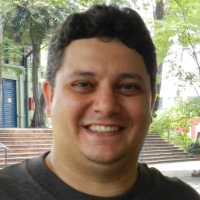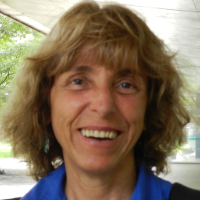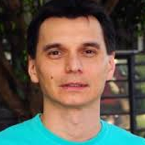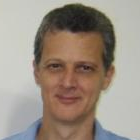International Journal of Intelligent Systems and Applications (IJISA)
IJISA Vol. 6, No. 1, 8 Dec. 2013
Cover page and Table of Contents: PDF (size: 430KB)
Super-resolution Image Created from a Sequence of Images with Application of Character Recognition
Full Text (PDF, 430KB), PP.11-19
Views: 0 Downloads: 0
Author(s)
Index Terms
Super-resolution Images, Image Registration, SIFT, RANSAC
Abstract
Super-resolution techniques allow combine multiple images of the same scene to obtain an image with increased geometric and radiometric resolution, called super-resolution image. In this image are enhanced features allowing to recover important details and information. The objective of this work is to develop efficient algorithm, robust and automated fusion image frames to obtain a super-resolution image. Image registration is a fundamental step in combining several images that make up the scene. Our research is based on the determination and extraction of characteristics defined by the SIFT and RANSAC algorithms for automatic image registration. We use images containing characters and perform recognition of these characters to validate and show the effectiveness of our proposed method. The distinction of this work is the way to get the matching and merging of images because it occurs dynamically between elements common images that are stored in a dynamic matrix.
Cite This Paper
Leandro Luiz de Almeida, Maria Stela V. de Paiva, Francisco Assis da Silva, Almir Olivette Artero, "Super-resolution Image Created from a Sequence of Images with Application of Character Recognition", International Journal of Intelligent Systems and Applications(IJISA), vol.6, no.1, pp.11-19, 2014. DOI:10.5815/ijisa.2014.01.02
Reference
[1]J. Yuan, S. Du, X. Zhu, “Fast super-resolution for license plate image reconstruction”, 19th Int Conf on Pattern Recog (ICPR), 2008, pp. 1-4.
[2]Y. Tian, K.-H. Yap, and Y. He, “Vehicle license plate super-resolution using soft learning prior”, Multimedia Tools and Applic, pp. 1-17, 2011.
[3]O.G. Sezer, “Super-resolution techniques for face recognition from video”, Thesis, Sabanci University, Istanbul, Turkiye, 62p. 2003.
[4]J.A. Kennedy, O. Israel, A. Frenkel, R. Bar-Shalom, H. Az-hari, “Super-resolution in PET imaging”, IEEE Trans Medical Img, pp.137-147, 2006.
[5]R. Willett, I. Jermyn, R. Nowak, J. Zerubia, “Wavelet-based super-resolution in astronomy”. In: XIII Astronomical Data Analysis Software and Systems, vol. 314, 2004.
[6]J.P. Papa, N.D.A. Mascarenhas, L.M.G. Fonseca, K. Bensebaa, “Convex restriction sets for CBERS-2 satellite image restoration”. Int. J. Remote Sensing, pp.443-458, 2008.
[7]L. Joyeux, et al., “Reconstruction of degraded image sequences. Application to film restoration”, Image and Vision Computing. n. 19, France, 2001, pp. 503-516.
[8]M. Irani, P. Anandan, S. Hsu, “Mosaic based representations of video sequences and their applications”, Proc. of Fifth Int Conf on Computer Vision (ICCV'95), 1995.
[9]C. Tang, Y. Dong, X”. Su, “Automatic registration based on improved SIFT for medical microscopic sequence images. In: 2nd Int Symp on Intell Inf Technology Application. IITA '08. vol. 1. 2008, pp. 580-583.
[10]C. Xing, J. Huang, “An improved mosaic method based on SIFT algorithm for UAV sequence images”, IEEE Int Conf on Computer Design and Applications (ICCDA), p. 414-417, 2010.
[11]F.A. Silva, A.O. Artero, M.S.V. Paiva, R.L. Barbosa, “Reconhecimento de Caracteres Baseado em Regras de Transições entre Pixels Vizinhos”, Avanços em Visão Computacional. Omnipax Editora Ltda, Curitiba, PR, 2011.
[12]L. Li, N. Geng, “Algorithm for Sequence Image Automatic Mosaic based on SIFT Feature” IEEE – International Confer-ence on Information Engineering. pp. 203 -206, 2010.
[13]R.Y. Tsai, T.S Huang, “Multiframe image restoration and registration”, Advances in Computer Vision and Image Processing. pp. 317–339 1984.
[14]H. Stark, P. Oksui, “High-resolution imge recovery from image-plane arrays using convex projections” J. Optical Society of America, vol.6, n. 11, pp. 1715–1726, 1989.
[15]D. Hathaway, P. Meyer, “NASA: Video Enhancer For Law Enforcement & More” Adv Imaging: Sol for the Electronic Imaging Prof, 1999.
[16]S. Baker, T. Kanade, “Super-resolution optical flow”, CMU-RI-TR-99-36, 1999.
[17]W.T. Freeman, T.R. Jones, E.C. Paztor, “Example-based super-resolution”, MERL (2001).
[18]M.S. Shrestha, I. Arai, “Signal Processing of Ground Penetrating Radas Using Spectral Estimation Techniques to Estimate the Position of Buried Target”, EURASIP Journal Applied Signal Proc. pp. 1198-1209, 2003.
[19]D.G. Lowe, “Distinctive image features from scale-invariant keypoints”. Int Journal of Computer Vision, Vol. 60, No. 2, pp. 91–110, 2004.
[20]M.A. Fischler, R.C. Bolles, “Random Sample Con-sensus: A Paradigm for Model Fitting with Applications to Im-age Analysis and Automated Cartography”, Comm. of the ACM, Vol 24, pp. 381–395, 1981.
[21]H. Nasir, V. Stankovic, S. Marshall, “Singular value decomposi-tion based fusion for super-resolution image reconstruction”, Int Conf on Signal and Image Proc Applic (ICSIPA), 2011 IEEE, pp. 393-398.
[22]Z. Dakun, L. Zhaoxin, J. Guiyuan, “A feature-based al-gorithm for image mosaics with moving objects, IEEE Int Conf on Intelligent Computing and Int Systems (ICIS), p. 26-29, 2010.
[23]P.V. Lukashevich, B.A. Zalesky, S.V. Ablameyko, “Medical Image Registration Based on SURF Detector” Pattern Recognition and Image Analysis, v. 21, n. 3, p. 519–521, 2011.
[24]X. Fang, B. Luo, H. Zhao, J. Tang, S. Zhai, “New multi-resolution image stitching with local and global alignment”, IET Computer Vision, vol. 4, n. 4, p. 231-246, 2010.
[25]T. Lindeberg, “Scale-space theory: A basic tool for ana-lyzing structures at different scales”, Journal of Applied Statistics, 1994.
[26]D.G. Lowe, “Object recognition from local scale-invariant features”. In: Int Conf on Computer Vision, Corfu, Greece, pp. 1150–1157, 1999.
[27]A. Collet, D. Berenson, S.S. Srinivasa, D. Ferguson, “Object recognition and full pose registration from a single image for robotic manipulation”, In: IEEE Int Conf Robotics and Automation, ICRA'09, pp. 48–55, 2009.
[28]S. Peleg, D. Keren, L. Schweitzer: Improving Image Resolution Using Subpixel Offsets (Motion). Pattern Recog Letters, pp. 223–226. 1987.
[29]T. Okabe, Y. Sato: Object recognition based on photometric alignment using RANSAC. In Proc of Comp Vision and Pattern Recognition. pp. 221-228, 2003.
[30]M. Brown, D.G. Lowe: Automatic Panoramic Image Stitching using Invariant Features. International Journal of Computer Vision, vol. 74, n. 1, pp. 59–73, 2007.
[31]G. Bradski, A. Kaehler, “Learning OpenCV: Computer Vision with the OpenCV Library”, O’Reilly, 2008.



